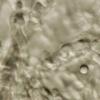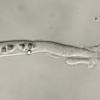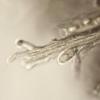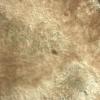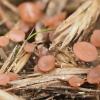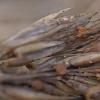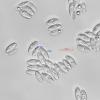
29-12-2025 08:30
Hello.A tiny ascomycete sprouting under Juniperus

29-12-2025 10:15
Hulda Caroline HolteHello, I found and collected this propoloid ascom

29-12-2025 09:38
Oskari VirtanenHi,could anyone help me identify this, I suspect P

28-12-2025 12:08
Margot en Geert VullingsThis possible Karstenia was found on the bark of d

21-12-2025 21:32
Pol DebaenstHello, Garden, Burgweg 19, Veurne, BelgiumOn 10/1

26-12-2025 21:19
Arnold BüschlenPithyella chalaudii Priou. Ist als Bryoparasit in

21-12-2025 09:32
Hello.A tiny ascomycete found embedded in wood in

18-12-2025 21:17
Pol DebaenstThe identification took me to Byssonectria deformi
Summarizing the few topics about Rutstroemia maritima here on the Forum and the description of R. calopus in the article "Estudio de la micobiota de los ecosistemas dunares de la Peninsula Ibérica e Islas Baleares"
produces the following:
R. paludosa - R. calopus - R. maritima
Cyperaceae + Juncaceae - Poaceae - Ammophila arenaria
long stalk - short stalk - sessile or very short stalk
no real croziers - croziers - croziers
amyloid - amyloid - non-amyloid
and the conclusion that this complex still needs further study.
But the last topic is dated 2021 and perhaps new insights have now been emerged?
So, once again a Rutstroemia/Clarireedia maritima, R. calopus var or some spec.
The substrate consists of the decaying spikelets of Ammophila arenaria, habitat is a small sand drift in the grey dunes.
The ascocarps are sessile-short stalked, the color is pale reddish-brown.
The asci are non-amyloid and they have croziers.
Spores measured (14) 12.0-17.0 x 5.0-7.0 mu, with small droplets.
Parafyses cilindric and a bit longer than the asci.
I think it should be C. maritima, but does C. maritima now exist?
thanks and regards
Bertien Roelandse

I thought the Clarireedia's were picky enough about their hosts to deserve their names, but you're right, thoughts are usually not enough in mycology.
My lovely Clarireedia's will have to wait until the specialists can prove that they are what they are. Too bad!
In any case, thanks for your answer.
Bertien

Thanks for your beautiful last sentence, it is a nice way to end my story about 'Clarireedia maritima'.
Bertien

